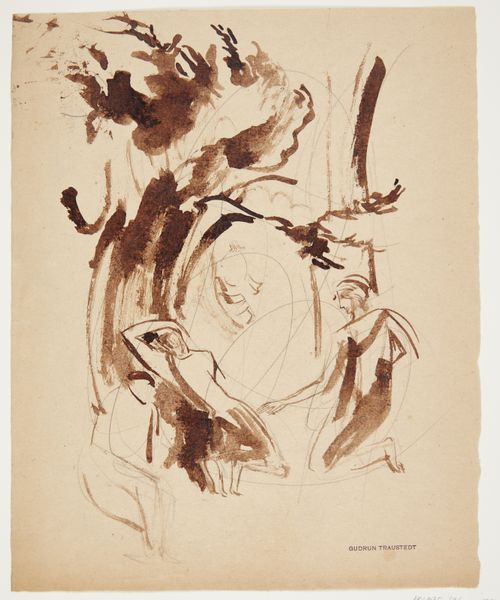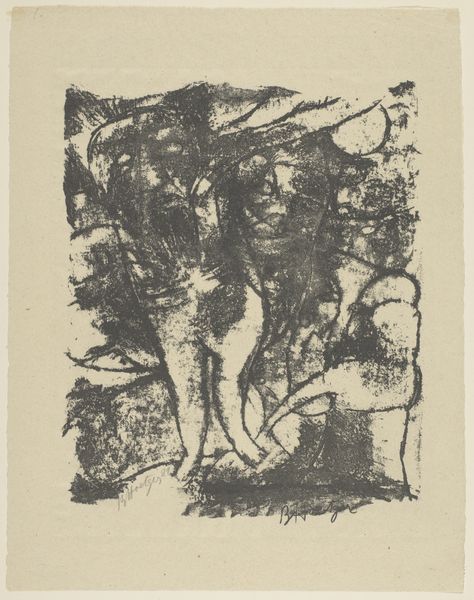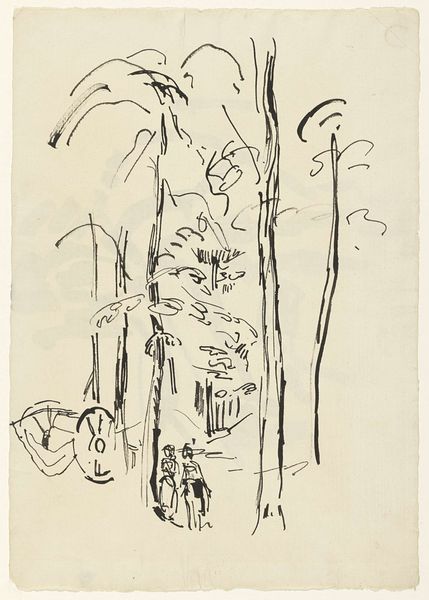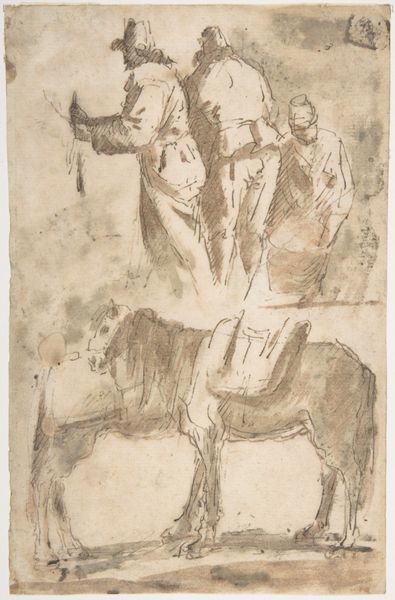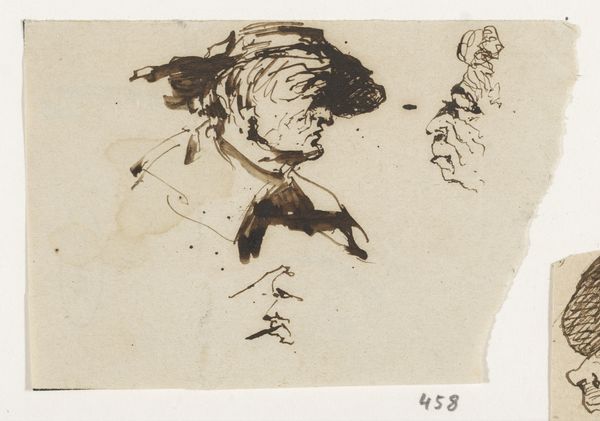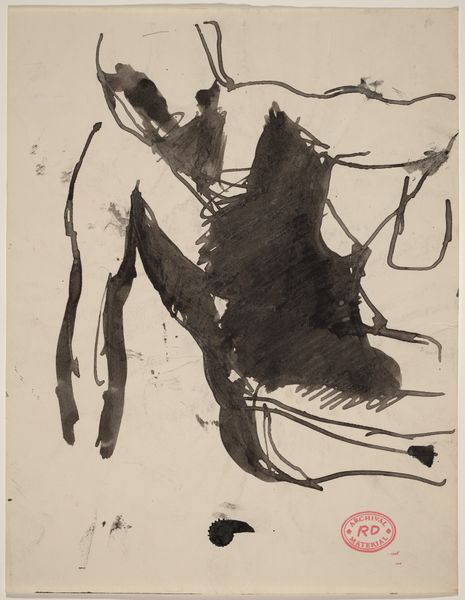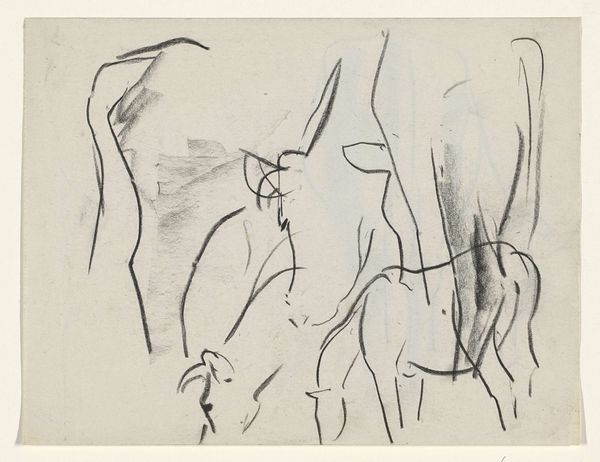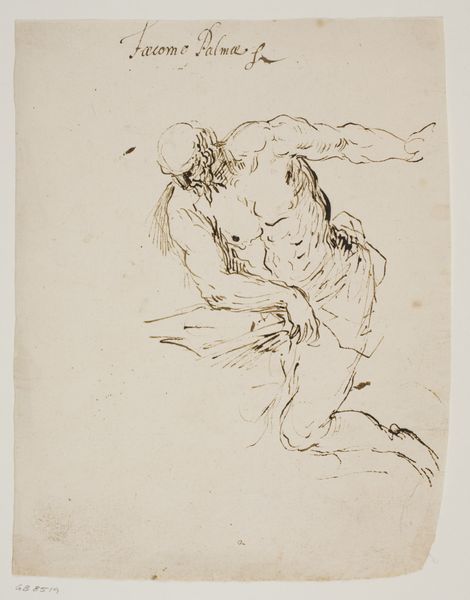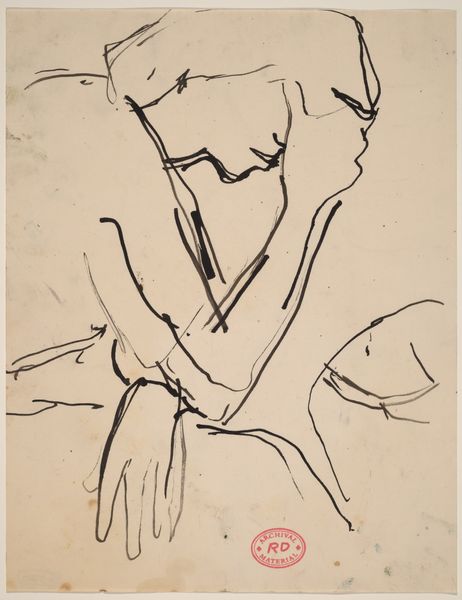
drawing, ink, pen
#
portrait
#
drawing
#
ink drawing
#
figuration
#
ink
#
pen
#
portrait drawing
#
genre-painting
Dimensions: height 174 mm, width 95 mm
Copyright: Rijks Museum: Open Domain
Editor: Here we have Johannes Tavenraat’s ink drawing, "Lopende man en koppen," created sometime between 1840 and 1880. It's a captivating character study, with a walking figure surrounded by various heads. The figures seem almost grotesque, rendered in a hurried, gestural style. How do you interpret this work? Curator: I see this not merely as a collection of character studies but as a social commentary. The grotesque features you mention can be read as a critique of societal norms and the bourgeoise of the time. Tavenraat places this walking man amongst a sea of faces that each hold their own complexities, symbolizing a societal landscape he might be moving through, both literally and figuratively. What does this tell us about how he views the human condition and its struggles during his period? Editor: That's fascinating! I hadn’t considered the social commentary aspect. So the rapid, almost caricatured style is purposeful? Curator: Precisely. The choice of ink, pen and drawing emphasizes the raw immediacy of social observation. Think about who traditionally held power and privilege at that time and the faces often associated with it. He presents those not necessarily at the centre. How does Tavenraat depict the characters? Does it humanize the marginalized or reinforce existing biases? And, given the period, what is the relationship of the work to the rise of Realism as an artistic movement? Editor: I guess the expressiveness of the faces humanizes them while also drawing attention to their individuality, especially the walking figure, whose body language conveys some form of purpose and intent. It is hard to interpret it though, he is a symbol that could be interpreted in several different ways. It makes one consider the power dynamics within that historical context. Curator: Exactly. Tavenraat's sketch encourages a broader discussion. Art isn't just about aesthetics; it's about power, representation, and challenging the status quo. Editor: I now perceive how even quick studies such as this drawing, beyond the initial stylistic qualities, can spark such reflection on our perceptions.
Comments
No comments
Be the first to comment and join the conversation on the ultimate creative platform.
